Conversations with Sven Lindblad
By Ben Lyons.
In 2005, I was in my mid-twenties, and had been for two decades already utterly fascinated with cruise ships and ocean liners. I had my childhood dream job — working as an officer onboard the Queen Mary 2 — while moonlighting as a travel writer covering cruises during my months off the ship.
Despite my cruise ship fascination, however, the expedition industry, with its disparate fleet of smaller, utilitarian ships, rarely came across my radar. A random assignment to sail to the Galapagos, on Lindblad Expeditions’ Polaris, ended up changing my life. (I still have a memory of walking down a Manhattan avenue, talking to the assigning editor about whether to take the story. What would have happened if I had said I was not interested?)
RELATED: New Lindblad CEO as Sven Lindblad moves into a new role. by Anne Kalosh.

Lindblad’s Polaris first served as a Danish-Swedish ferry before being converted into an expedition ship. * Photo: Ted Scull
I was hooked
I came back from the week on Polaris with a new appreciation for expedition travel.
Almost overnight, I had become enthused about the use of a ship as a platform for education and delighted in the close interaction between the expedition staff and passengers. I was hooked.
Shortly afterwards I had the opportunity to interview Sven Lindblad at his Manhattan office for the article I was writing. I knew enough to appreciate Sven’s background. His father, Lars-Eric Lindblad, had essentially invented expedition cruising with the purpose-built Lindblad Explorer in 1969.
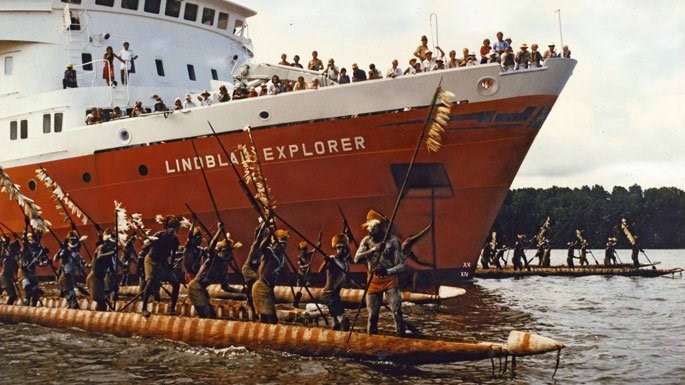
Guests aboard Lindblad Explorer are greeted by Asmat warriors in what was then called Irian Jaya and now renamed West Papua. * Photo: Lindblad Expeditions
His father’s company, called Lindblad Travel, paved the way for so much of the travel we take for granted today — from Antarctica to Galapagos to China.
And in 1979, Sven set out to form his own company, Special Expeditions (now named Lindblad Expeditions.)
Thought Leader
Throughout his career, Sven has championed new ideas that have helped turn a tiny company into one of the few publicly-listed cruise lines. After the attacks of 9/11 decimated the travel industry, Sven and his team developed Lindblad’s Friends for Life program — where loyal passengers, who wanted to see the company survive, would essentially loan the company money by booking future, undetermined trips in exchange for lifelong perks that could even be passed down through generations. The program was as enormously successful as it was novel, and Lindblad survived.
It was also Sven who, a few years later, curated the marketing alliance with National Geographic. With the rise of digital photography, and the mirroring of two esteemed organizations, it was a brilliant move. It represented a true partnership much deeper than the typical marketing-inspired veneer partnerships that seem to fill the broader cruise industry today.
Conservation Driven
Sven was also motivated by a belief that travel could be a force for good, and that conservation was vital.
Onboard his ships, passengers were encouraged to donate to local organizations the company supported. In return, the company would give an equal amount to the passenger in the form of a voucher for a future cruise.
It was a brilliant program that has raised millions of dollars (while undoubtedly driving hundreds of millions of dollars in future bookings). Sven would eventually become a member of the revered Ocean Elders, and a highly respected voice in the ocean conservation world.
Deep Thinker
My post-Polaris talk with Sven was probably the first cruise line executive I had the chance to interview. The exact contents of the talk escape me now; however, I remember it was not a typical marketing or superficial interview. Instead, I recall insightful, thoughtful answers; a refreshing honesty; and my notions on the cruise industry being challenged by Sven.
While I didn’t know it then, this would be the first in a long series of meaningful, insightful conversations that I would have with him over what is now 15 years.
Occasionally, we would stay in touch, and I subsequently invited Sven down to Brooklyn to tour the Queen Mary 2. He told me that he had offered a pairing to his passengers — sail the QM2 to Europe, and then join the Endeavour for an “around UK” cruise.
He told me not one Lindblad passenger opted for the QM2 crossing. I was struck by how different his company’s passengers were with Cunard’s, and that not one would have elected to take this opportunity.
Jumping Ship
By now thoroughly hooked on expedition travel, I sailed to Antarctica in 2007, again on a writing assignment, on Lindblad’s National Geographic Endeavour. I had an ulterior motive, though. Over the few months prior, I had begun discussing with Lindblad’s management team about possibly leaving QM2 and joining the soon-to-be launched National Geographic Explorer. If the experience on the NG Endeavour was what I hoped it would be, I had decided to make the switch.
Suffice to say, Antarctica and the ship more than exceeded my expectations, and eight months later, I left QM2 to join the much smaller Lindblad ships.
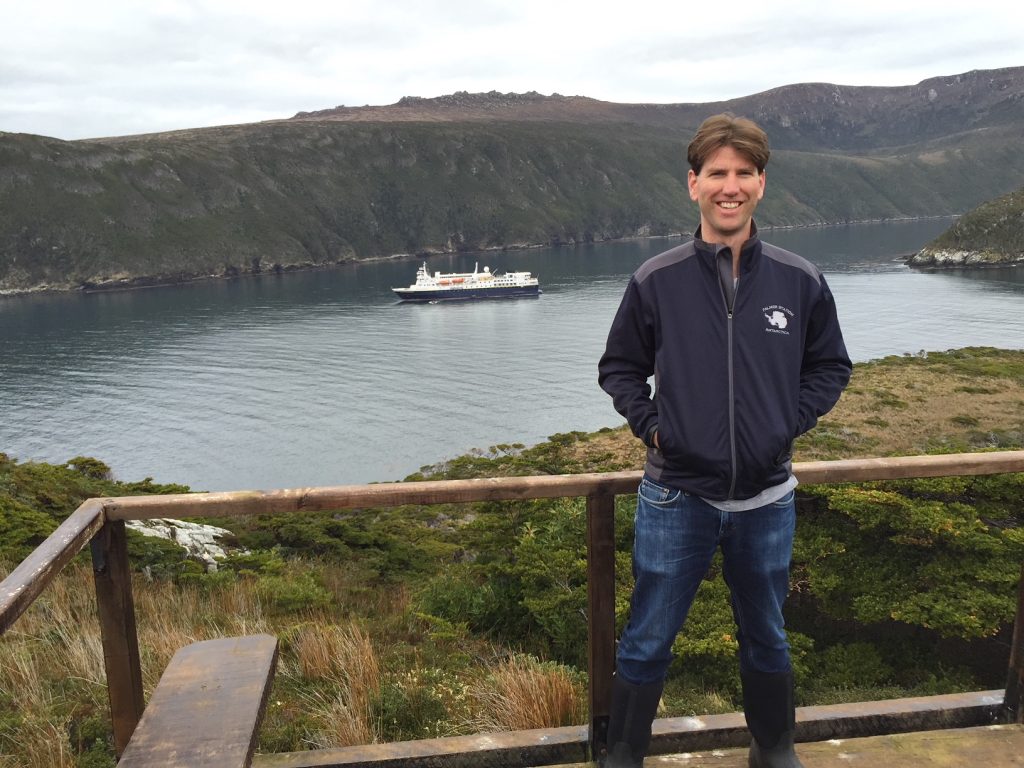
At Staten Island, Argentina, with Nat Geo Explorer in the background, the first call there by a foreign ship. * Photo: Ben Lyons
Saying he believed more in finding the right people than finding the right job description, Sven had helped put together a unique, even if slightly undefined, role for me.
Working partly on the ship as Chief Officer, and partly in the Manhattan office, I was to be involved in a mix of marketing, product development, and even more vaguely, helping to link the shoreside teams with the shipboard teams.
The financial market meltdown of 2008 intervened in the best laid plans; the job as planned never took hold. Yet for the next couple years, I ended up spending time in the Manhattan office — sometimes just in for a meeting of a few hours, at other times for projects that stretched several months.
“Hey, you got a minute?”
During that time, I was lucky enough to carry on sporadically with my series of meaningful discussions with Sven. Often, I would be sitting at my desk, and with no notice Sven would walk by and say, “Hey, you got a minute?”
And with that, we’d walk up to the building’s rooftop with its view over the Hudson river, and I’d hear whatever was on Sven’s mind, and attempt, as best I could, to try and offer at least something helpful or insightful in return.
What struck me then was how engaged Sven was with the workings of the company.
Of course, he tracked bookings and revenue each day, but it was more than just profit and loss he was interested in. He wanted to hear how things were really going on the ship — what was working, what wasn’t, how were passengers reacting to the new ship.
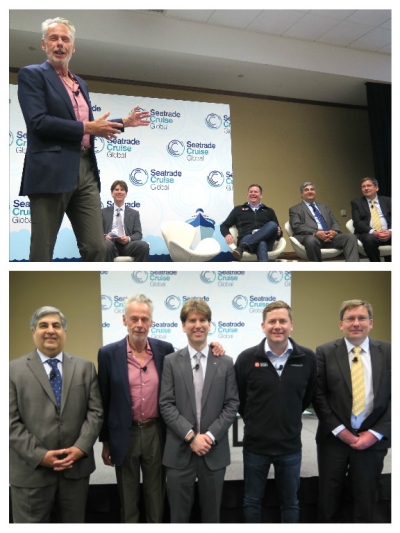
Top: Seatrade Cruise Global Expedition Round Table (2017) Keynoter Sven Lindblad. Bottom, from left: Ponant’s Navin Sawhney, Lindblad, Capt. Ben Lyons (moderator), Hurtigruten’s Daniel Skjeldam, Foreship’s Markus Aarnio * Photos: Anne Kalosh
https://quirkycruise.com/expedition-cruising-is-booming/
Sven’s School of Travel
Here are some of the stories Sven told on the rooftop that offered business-school-level insights years before I got my MBA:
Organizational Change
- He recounted how when he wanted to introduce kayaking in Antarctica, he was met with skepticism from his shipboard team, who felt that it would be all but impossible to do safely and consistently. Rather than give up on the idea, he asked his team to take the next season to objectively evaluate every day in Antarctica. Would it be safe to kayak that day if there was such a program? Would it be a good guest experience? At the end of the season, with the numbers and data showing that the frequency of possible kayak days being much higher than anyone expected, the expedition staff became the biggest proponents of getting the program in place. It was a perfect case study in organizational change, although I couldn’t have labeled it as such back then.
Corporate Culture
- During another moment, we were in a cab heading uptown on the West Side Highway. With the National Geographic Explorer having recently joined the company, Lindblad was now a significantly larger entity than it had ever been in its history. Sven shared that there were now people in the company working for him that he had never met; he pondered how to maintain that personal feel and spirit in a company that was growing larger day by day?
Asking Why
- I vividly remember a marketing manager advocating for a particular photo to be the next cover shot in the brochure. Sven asked why that photo was chosen; the answer of “I like it more and think it looks more dramatic” was not sufficient. Sven probed, wanting to understand why one was better than the other, what proof was there that one was better than the other, and how would that insight further inspire people to travel on his ships.
Kicking the Bucket List Aside
- When I first introduced Sven over dinner to my now wife, an enthusiastic, hard core traveler, she asked what countries were still on his “bucket list.” He recoiled and talked about how he hated the concept of a “bucket list” and that travel was much more than about crossing destinations off a list.
A Legacy of Expedition Travel
Over the years, both Sven and I would suffer our ups and downs and different setbacks. When I faltered, Sven was supportive, but let me learn from my mistakes and the hard lessons therein.
And perhaps most remarkable about the company that he founded was the deep loyalty earned from his team.
Even today, sitting just outside his office, is the utterly competent Pamela Fingleton, who joined Sven as his first hire in 1979.
She started out at a time when everyone did anything that was needed, from reservations to payroll. Later, she would work keeping not just Sven’s schedule together, but keeping the entire company running smoothly. Other expedition staff, such as true expedition legends Tom Ritchie or Pete Puleston (who both sailed on the original Lindblad Explorer), still remain working for Sven.
With Sven stepping down as CEO, an era is undoubtedly coming to an end. His mark will remain with the company, however, as he moves into his new role and no doubt continues to ponder the best way to keep the same company spirit intact even as it grows to new levels and navigates the ever-changing landscape of expedition travel.
Ben Lyons is CEO of EYOS Expeditions and has spent his entire life captivated by ships and travel. As a Captain, travel writer and MBA, his unique set of skills allows him to mix his passion for travel and work.
RELATED: Ben Lyons is Named to Seatrade’s “20 under 40.” by Anne Kalosh.
Don’t miss a post about small-ship cruising, subscribe to QuirkyCruise.com for monthly updates & special offers!
© This article is protected by copyright, no part may be reproduced by any process without written permission from the author. All Rights Reserved. QuirkyCruise.com.

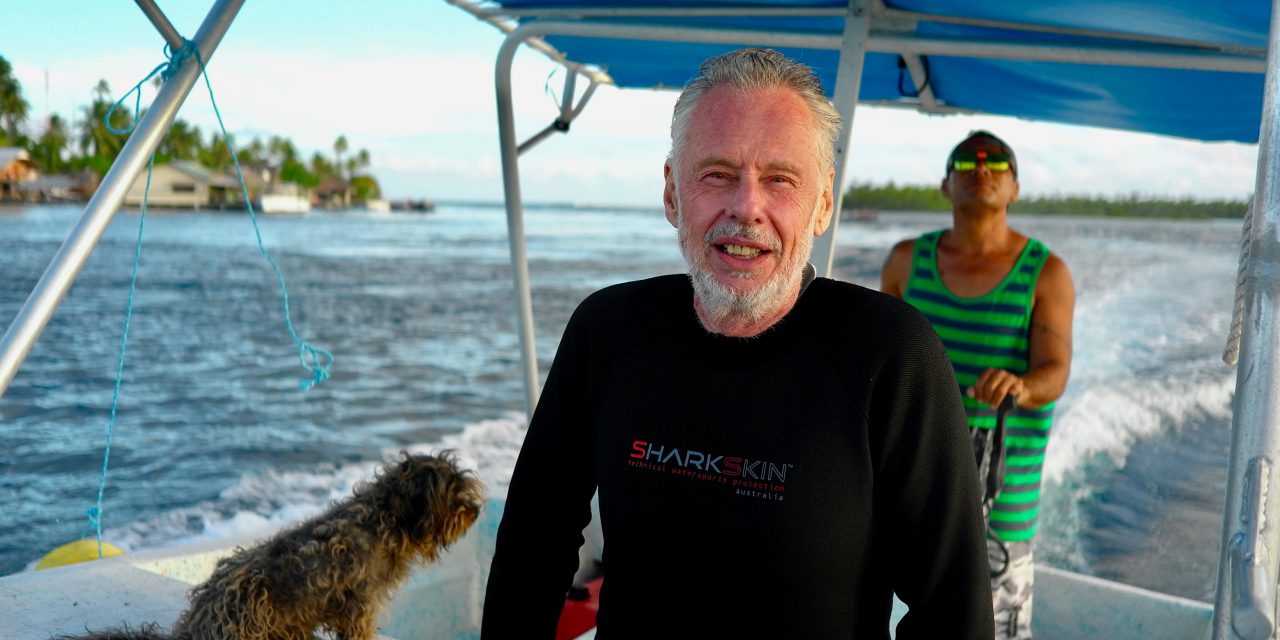
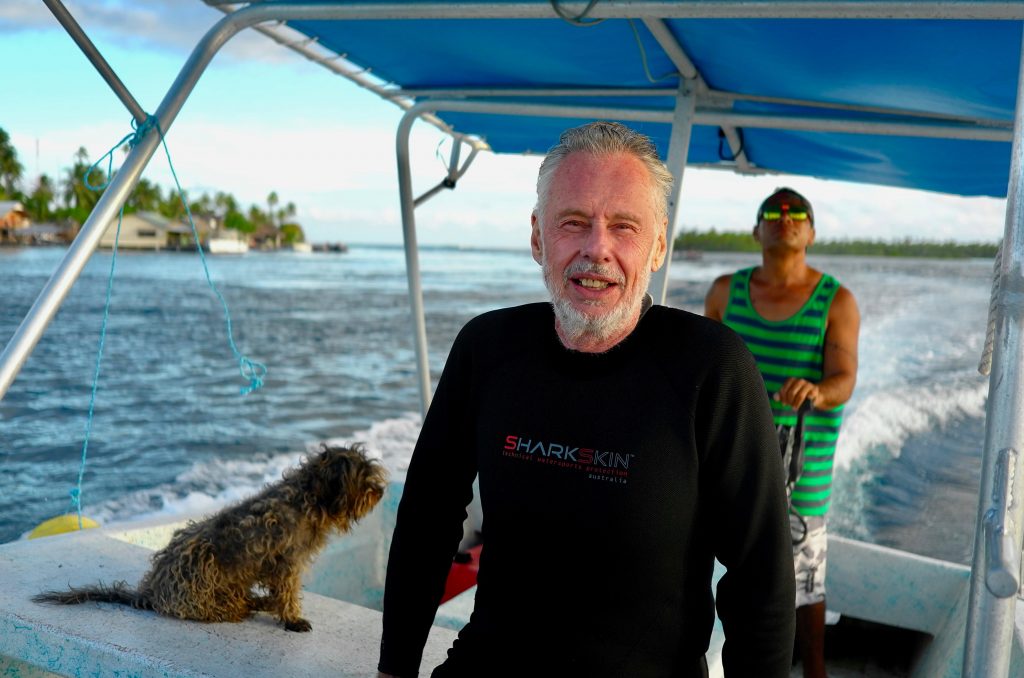
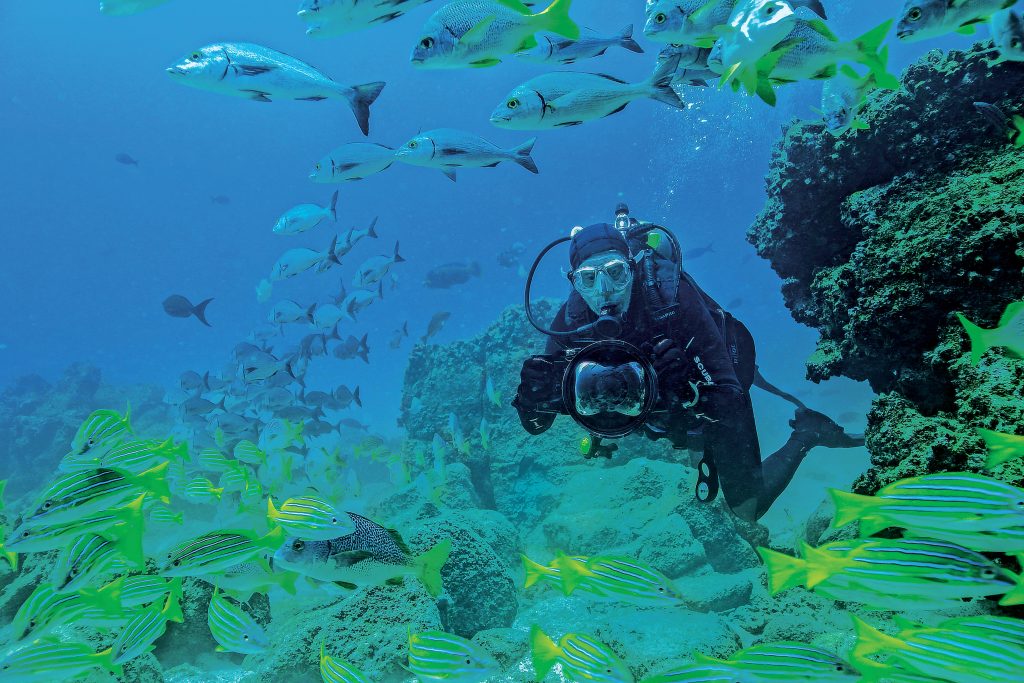
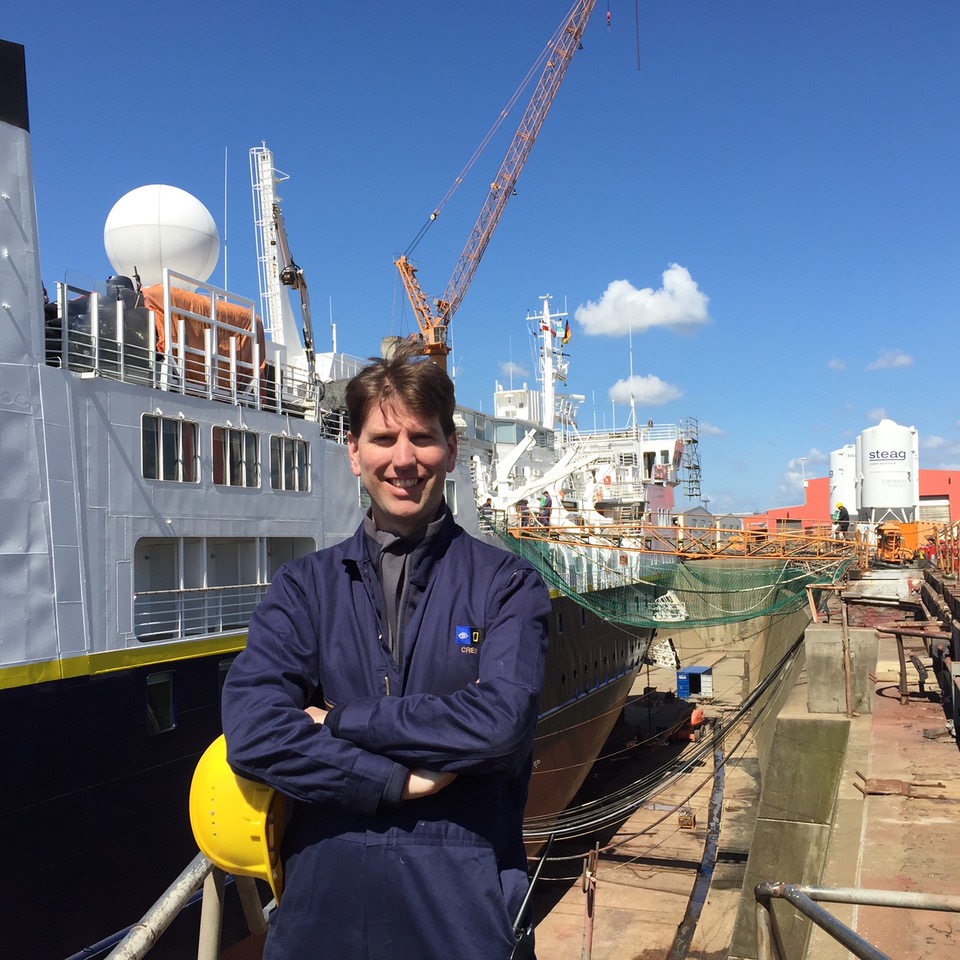
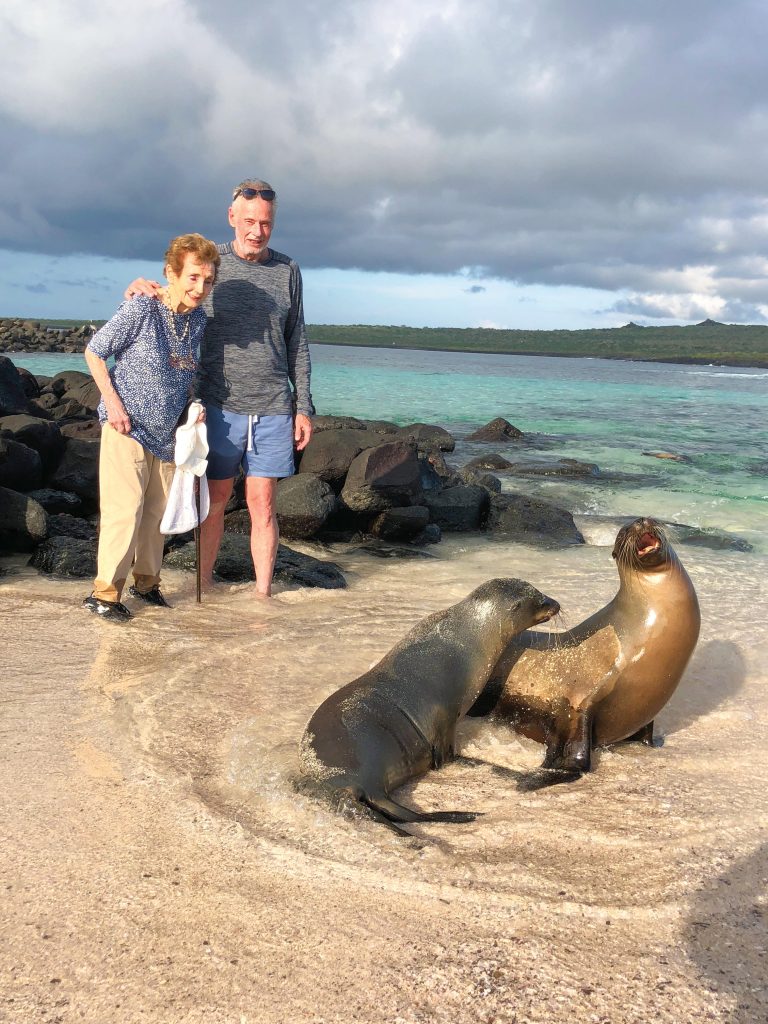
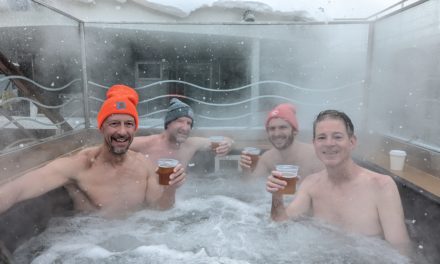

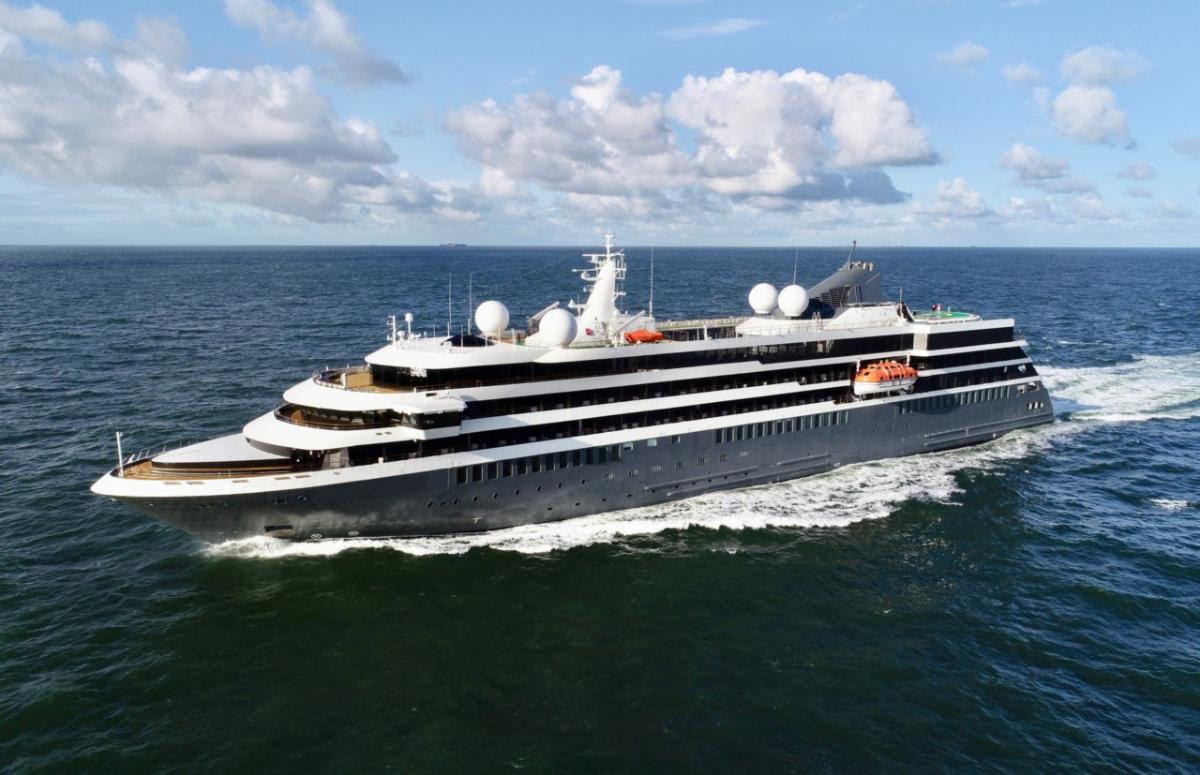
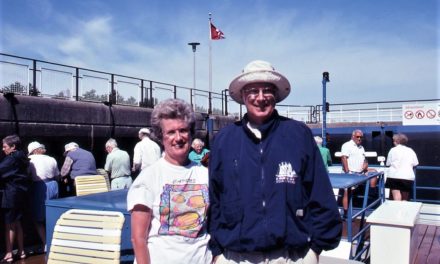








 HEIDI SARNA
HEIDI SARNA












Great Article Ben. As you know, I sailed as Captain with Lindblad Expeditions for some time. I can appreciate your time spent working and interviewing Sven. I wish you all the best with your future sailing, writing, and EYOS Expeditions.
Thank you George! Much appreciated. Lindblad was a great company for us both!
Thank you for this excellent feature, Ben! What visionary — his legacy will be the blueprint and inspiration for many to follow.